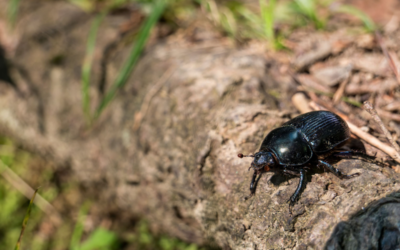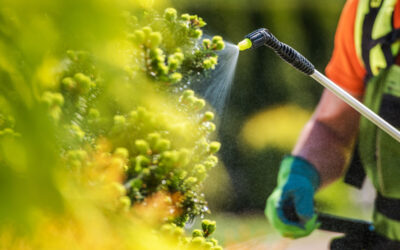Horse owners wrap their horses’ legs to protect the legs, tendons and ligaments while the horse is in a stall. Weekend athletes wrap their sprained ankles with Ace compression wraps during recovery. Did you know trees need wraps too?
Particularly young trees, the trees with the less-extensive root systems.
Wrapping the tree trunks does two things, protects against wildly fluctuating winter temperatures and to protect against sunscald.
According to www.denver.org, the biggest surprise for visitors to Denver is the climate. The arid conditions bring only 8 to 15 inches of annual precipitation and locals wake up to more than 300 days of sunshine a yea—more annual hours of sun than Miami and San Diego.
The average daily high temperature in winter is 45 degrees Fahrenheit and it’s not unusual that daytime temps reach 60 degrees. But temps fall at night. Denver’s coldest month is January when the average overnight temperatures dip to 15.2°F.
That warmth is what causes Sunscald (also called “south-side damage.”) During Denver’s warm and sunny days, cells of trees wake up from their long winter’s sleep and begin to move water and nutrients through the tree’s vascular tissue. While you’d think snow on the ground would indicate it’s too cold even for the trees to be outdoors, the opposite is true. The white snow on the ground reflects the sunlight back to the tree trunk and warms up the tree even more than if there was no snow.
When the sun sets at end of day, temperatures fall. The cells in the tree that have not moved water through their walls fast enough burst damaging the bark. The tree wrap provides insulation and reflects the sun away from the white wrapped trunk, keeping temperatures down and slowing water movement in the tissues to dormancy levels.
The best technique to wrap a tree is to start at the base overlapping the wrap 1/3 with each turn. Wrap the trunk up to the first limb and tape it securely with duct tape.
Darrin Parmenter, director and horticulture agent of the La Plata County Extension Office, in La Plata, Colorado, recommends wrapping the tree around Thanksgiving and removing the wrap mid-April.
Once the tree begins to form bark, wrapping won’t be necessary.
Young ash, honey locust, maple and linden trees must be wrapped in winter. Coniferous trees—fir, spruce and pines, do not require wrapping. Trees with white bark—aspen and birch—do not need wrapping. And mature trees do not need wrapping either.
You can buy tree wrap in 3 inch x 50 feet lengths at your local hardware store or online at www.zoro.com for only $2.69 a roll.
If you want a professional wrap, call Donovan Arborists. For decades, Denver and outlying homeowners have counted on Donovan to prep their trees to survive winter at 5280 feet elevation. Read more advice about tree maintenance in our blog. And call us to schedule your tree trimming during winter, the best time of year to trim a tree.
That’s a wrap.




